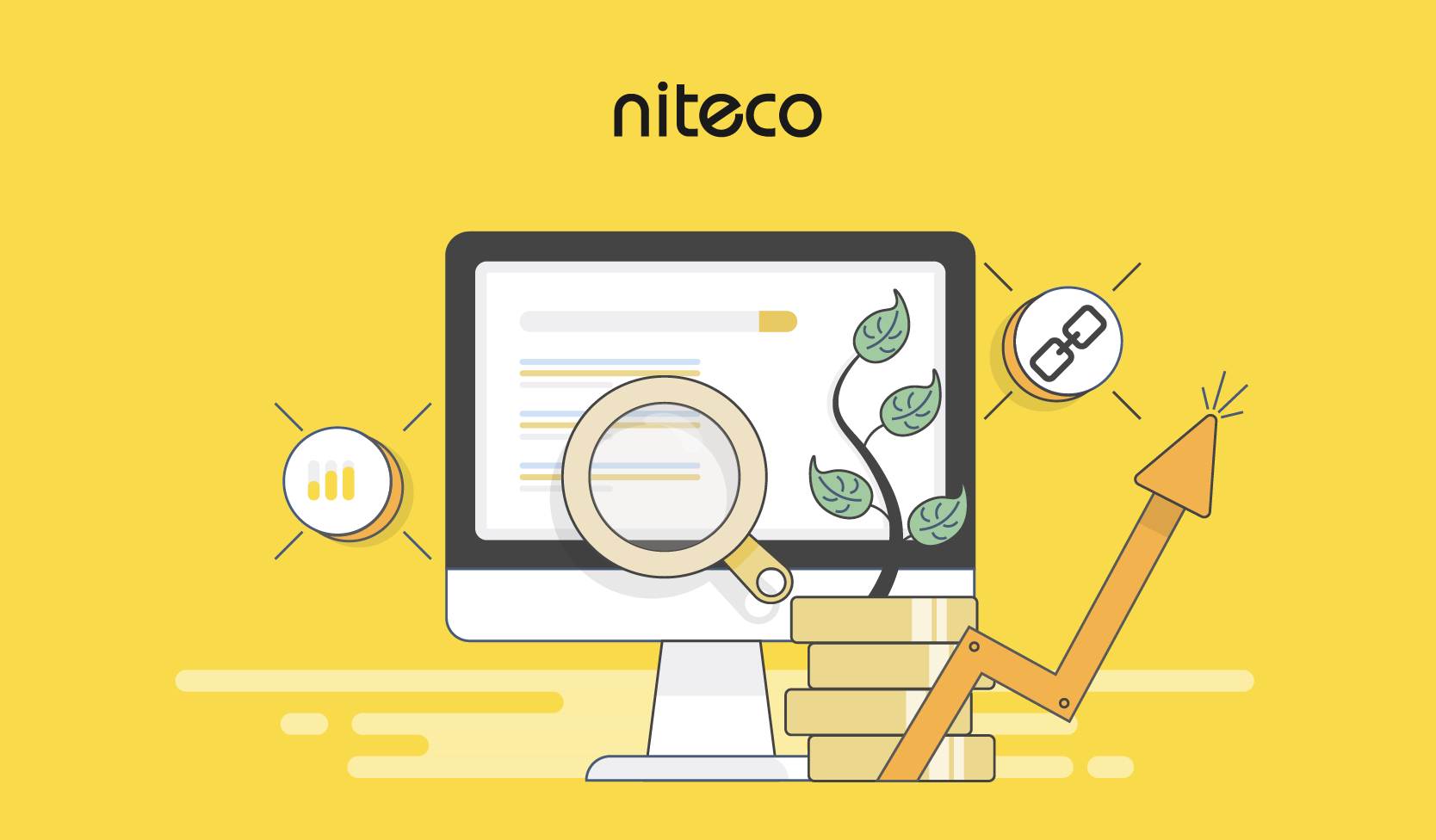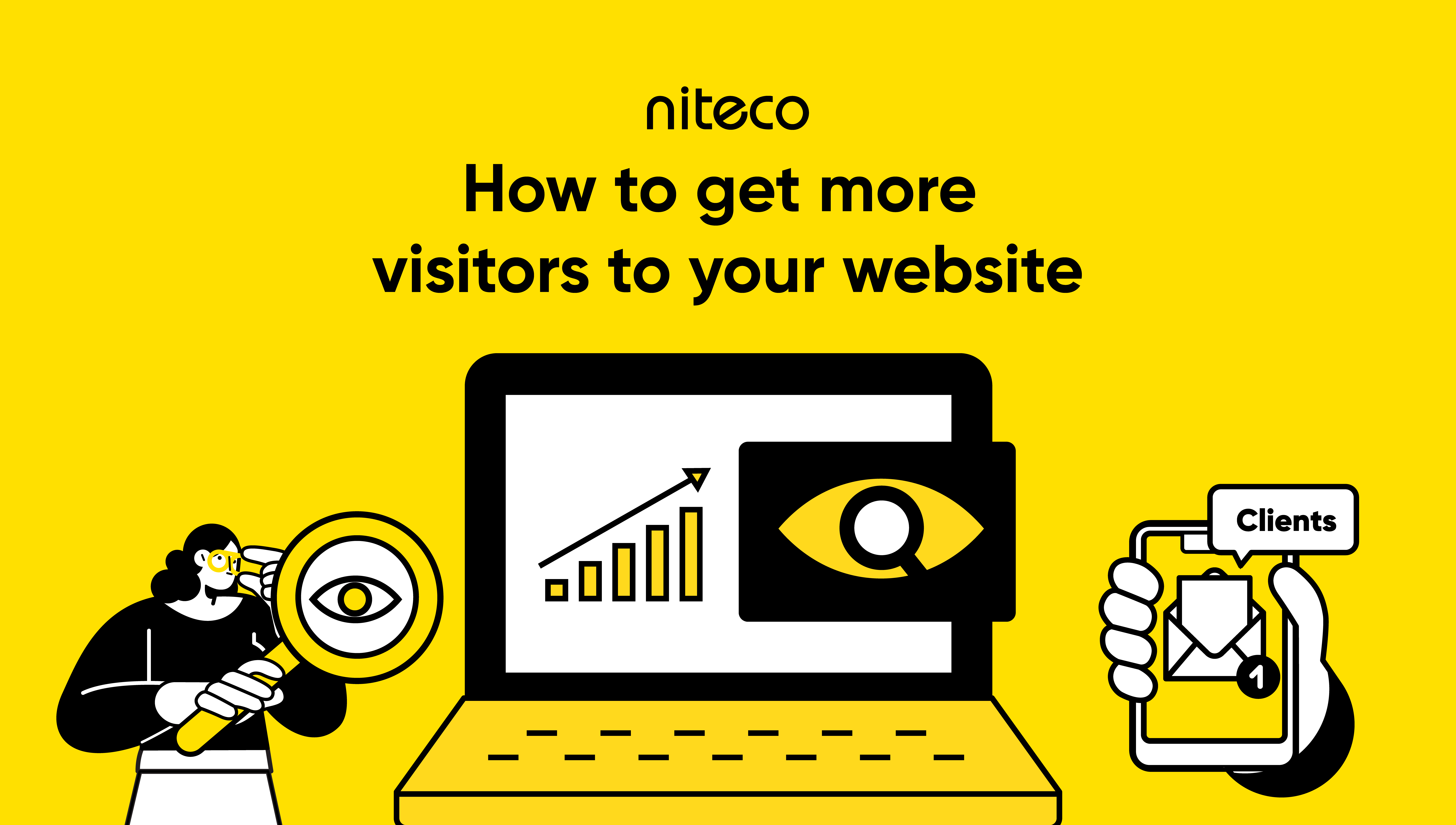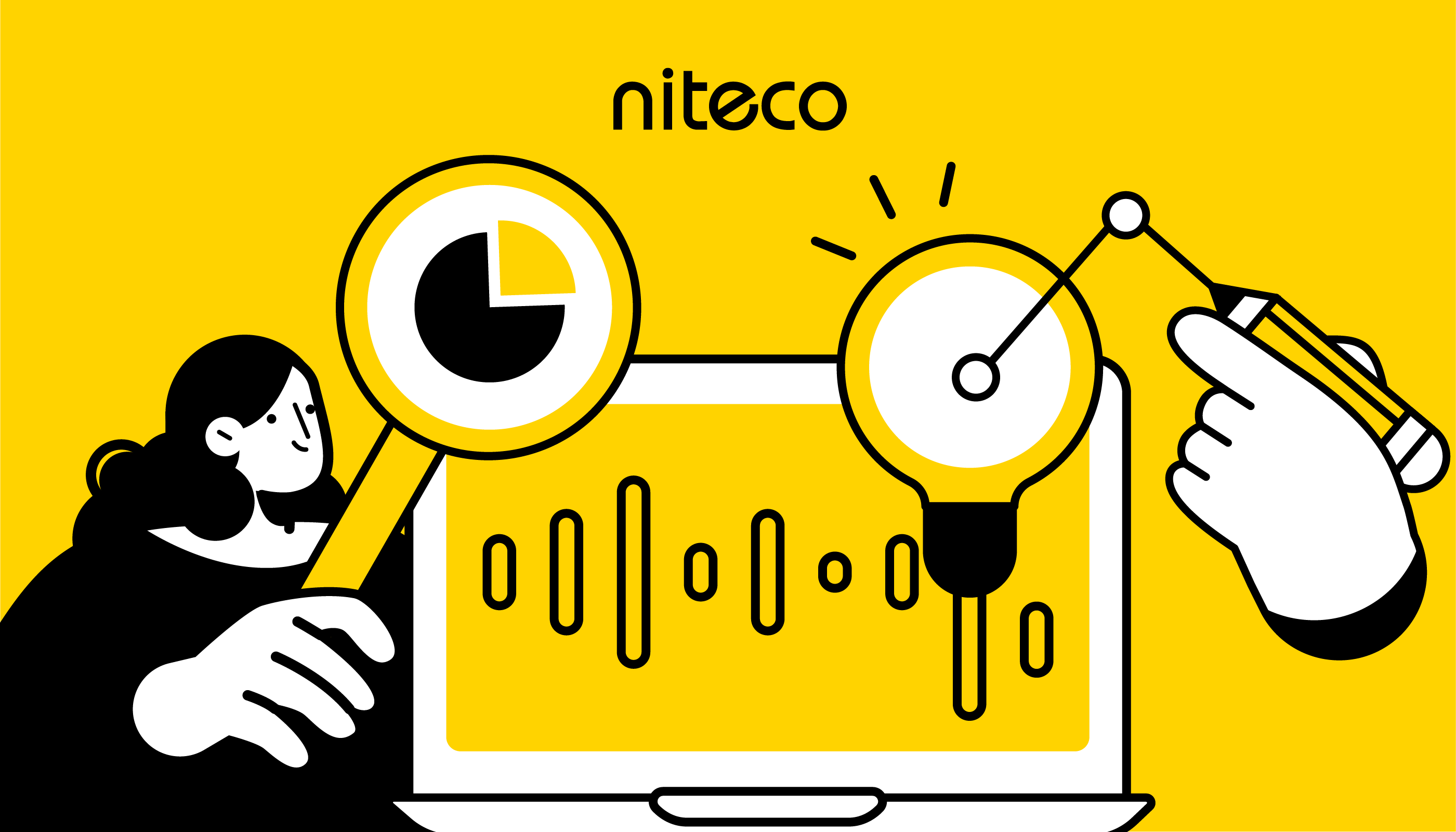Not every number in digital marketing tells a story worth following – but one that does is your website’s conversion rate. By understanding how to calculate website conversion rate, your business can move beyond vanity metrics and focus on what truly drives growth. It provides the insights necessary to refine strategy, improve user experience, and boost overall performance. In the end, success isn’t measured by traffic alone — it’s about converting visitors into genuine value.
This article aims to guide you through the process of tracking, calculating, and interpreting conversion rates to drive substantial growth. By concentrating on the metrics that matter, you'll gain the clarity and confidence to make smarter, results-focused decisions for your website.
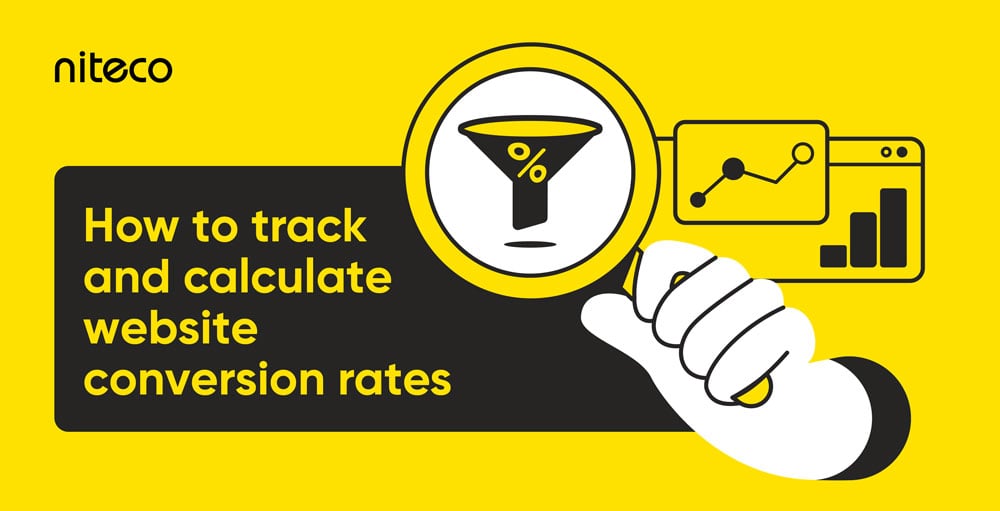
What is website conversion rate?
In a website or Commerce context, a conversion rate refers to the percentage of visitors who complete a desired action — like making a purchase, subscribing to a newsletter, or filling out a form. This metric is essential for evaluating how effectively a website converts traffic into actual results.
The conversion rate serves as a critical Key Performance Indicator (KPI) for measuring website performance, helping to highlight key areas such as:
- Effectiveness measurement: It directly indicates how well your website turns visitors into customers, providing insight into the effectiveness of marketing strategies and user experience.
- Actionable optimization: A low conversion rate helps identify areas that require improvement - whether it’s design, content or call-to-action elements.
- Goal alignment: Unlike vanity metrics (page views or traffic), tracking conversion rates aligns business objectives with customer needs, allowing companies to adjust their strategies accordingly.
- Business growth indicator: The higher the conversion rate, the greater the boost in the overall profitability and customer engagement, giving your business a competitive edge in the market.
- Return on investment (ROI): By understanding your conversion rate, you can assess the ROI of all marketing efforts to make cost-effective resource allocations while maintaining focus on result-driven strategies.
- User experience insights: Strong conversion rates often signal a positive user experience, while lower rates can highlight areas for improvement, such as slow loading times or unclear navigation.
In short, conversion rate is a key metric that offers valuable insights into website performance, helping you boost user engagement and grow your business.
How to calculate website conversion rate
Now that you get the what, let’s dive into the how - how to calculate conversion rate.
It is, indeed, not a complicated formula:
| Conversion rate (%) = (Number of conversions / Total website visitors) × 100 |
Breaking it down:
- Number of conversions: This refers to the total count of desired actions performed on your website. "Conversions" here can be purchases, form submissions, newsletter signups, or any other key action that drives value for your business. The definition of a conversion is flexible, tailored to what matters most for your success.
- Total website visitors: This refers to the total number of visits on your website during a particular period.
Example:
If your Commerce website had 5,000 visits in a month and 250 of them were successful purchases, this is how you use the website conversion rate formula:
Conversion rate = (250 ÷ 5,000) × 100 = 5%
This means 5% of your visitors completed the desired action. 5% is your conversion rate!
What is a good website conversion rate?
There’s no one-size-fits-all answer. The fact is, what qualifies as a “good” website conversion rate depends on different contributing factors.
While many sources throw around average conversion rates (typically between 2% and 4% for Commerce websites, according to a 2025 report by SpeedCommerce), the reality involves many variables. Your industry, the source of your website traffic, the type of action you're measuring, and even the device your visitors use can all drastically influence conversion rates.
For example, industries like fashion, consumer goods, and food & beverage typically see higher conversion rates than those in luxury & jewelry or home & furniture, where purchasing decisions tend to take longer due to higher prices and more consideration. Here’s a closer look at the latest data from March 2025.
|
Industry |
Conversion Rate Benchmark in March 2025* |
|
Food & Beverage |
5.64% |
|
Beauty & Personal Care |
4.81% |
|
Multi-brand Retail |
4.48% |
|
Consumer Goods |
3.44% |
|
Pet Care & Veterinary Services |
2.95% |
|
Fashion, Accessories & Apparel |
2.86% |
|
Home & Furniture |
1.21% |
|
Luxury & Jewelry |
1.1% |
* Data by marketing.dynamicyield.com
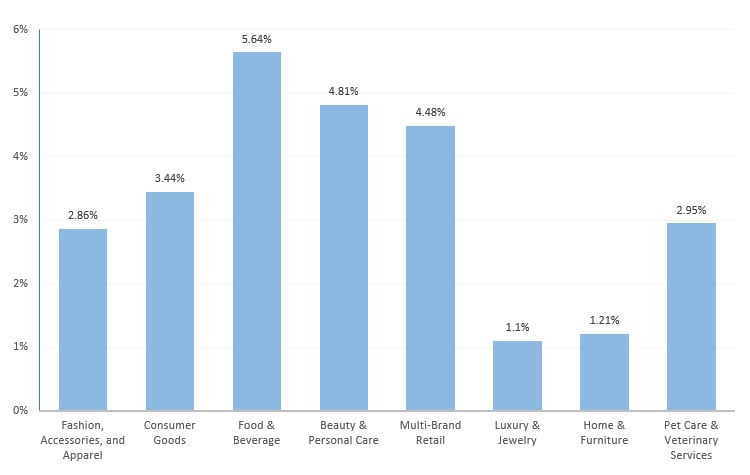
Source: Dynamic Yield
The above-analyzed data shows the varying conversion rates across industries. To see how your website stacks up against others in your sector, it’s useful to explore reliable sources of website conversion rate benchmarks. Below are some go-to places:
- Marketing platforms & analytics tools: Platforms like HubSpot, Unbounce, WordStream,... often publish annual reports with industry-specific conversion rate stats.
- Google Analytics 4 benchmarking: Within Google Analytics 4, you can enable Benchmarking Reports (if data sharing is turned on) to compare your metrics against aggregated industry data.
- Research & industry reports: Look to organizations like Statista, Nielsen, or eMarketer for broader performance benchmarks across sectors and regions.
- Competitor & market research tools: Tools like SimilarWeb, SEMrush, and Ahrefs offer insight into competitor performance and conversion trends by industry.
These resources provide a general idea of how businesses like yours are performing. But while external benchmarks offer perspective, your most valuable benchmark is your own data. So, rather than chasing a generic benchmark, a better approach is to benchmark against yourself:
- Look at your current conversion rate.
- Analyze it by channel, device, and conversion type.
- Set goals based on improving your own metrics over time.
Important conversion rate KPIs
Website conversions look different for every business. Let’s explore key conversion types by business model.
Commerce
- Product purchases: The most direct and critical conversion rate KPI—turning a visitor into a paying customer.
- Add-to-cart actions: A micro-conversion that signals buyer interest – useful for retargeting campaigns and recovering abandoned carts.
- Promotional email sign-ups: Collects potential customer information for personalized marketing and future sales opportunities.
- Average Order Value (AOV): Higher AOV often leads to higher conversions as customers spend more per order.
- Units per transaction: More items per transaction can increase total sales, boosting conversion rates.
- Average transactions per user: Repeat customers tend to convert more, increasing overall conversion rates.
- Cart abandonment rate: Lowering abandonment through a smoother checkout process can directly improve conversions.
B2B / SaaS
- Demo requests: High-value conversions showing strong interest; often lead to direct sales conversations.
- Free trial sign-ups: Encourages hands-on experience with the product, allowing potential customers to evaluate before buying.
- Contact form submissions: Key for initiating direct conversations or consultations.
- Lead magnet downloads (eBooks, Whitepapers, Guides): Captures qualified leads and provides them with valuable content to nurture further engagement.
Service-Based Businesses
- Quote requests or appointment bookings: A key indicator of a strong intent to engage with your services and move forward in the decision-making process.
- Contact submissions: Signals interest and open doors for strong relationship building.
- Newsletter sign-ups: Expands your audience for future marketing and helps maintain brand awareness.
- Resource access (Case studies, portfolio views): Indicates genuine interest in your expertise and showcases your credibility or past success.
Content & Media Sites
- Newsletter sign-ups: Build an engaged audience for future revenue opportunities (ads, products, sponsorships) and help grow your follower base across multiple channels.
- Account creations or membership registrations: Indicate customer loyalty and grants access to exclusive or personalized content.
- Content shares or engagements: Although not transactional, these actions expand your reach and demonstrate audience connection with your content.
Each of these conversion types can be tracked and optimized based on the specific business model and objectives. Using the right conversion rate KPIs that represent meaningful user actions ensures your metrics reflect real business outcomes. This alignment enables smarter, data-driven decisions, ultimately driving growth and improving your business performance.
How to track conversion rates effectively - Best practices
It takes a mix of the appropriate tools, a strong setup, and astute analysis to track conversion rates properly. Here's how to accomplish it successfully:
Use the right tools
To start, you’ll need reliable analytics tools that give you visibility into user behavior and conversion paths. Some essentials include:
- Google Analytics 4 (GA4): Tracks user interactions, conversion events, and traffic sources.
- Google Tag Manager: Helps manage and implement tracking tags without editing code.
- Heatmaps (e.g., Hotjar): Visualize how users interact with your pages—what they click, scroll past, or ignore.
- A/B testing tools (e.g. Optimizely): Measure how different versions of a page or element perform in driving conversions. Read how Optimizely A/B testing features can help improve your ROI.
Ensure accurate setup
Even the best tools won’t help if they’re not set up correctly. Take time to:
- Define conversion events clearly (e.g., purchases, form submissions, sign-ups).
- Test your tracking setup to ensure all data is captured correctly.
- Create goals and events in Google Analytics to measure specific actions.
- Use UTM parameters on links to identify campaign performance.
Segment for deeper insights
Reviewing your overall conversion rate is helpful, but deeper segmentation unlocks the real insights. Analyze your data based on:
- Traffic source: Break down your conversion rates by channel (organic search, paid ads, social media, email) to identify which traffic sources drive the most conversions. This will help you allocate resources effectively and optimize campaigns for higher returns.
- Landing page: Identify which pages are achieving high conversion rates and which aren't. Look at factors like page design, copy, CTA placement, and load times to determine areas for improvement and to enhance user experience.
- Device type: Understand how performance differs across different devices (desktop, mobile, and tablet). Mobile users may behave differently from desktop users, so optimizing for mobile (such as faster load times and mobile-friendly design) can significantly boost conversions.
- Location or demographics: Segment your data by geographic location or demographic factors (age, gender, interests) to uncover patterns in audience behavior. This can highlight regional preferences or demographics that convert better, allowing you to tailor your content or offers accordingly.
By combining the right tools with thoughtful setup and segmented analysis, you gain a clear picture of what's working - and what needs attention - on your website.
Conclusion
Grasping how to calculate and monitor the appropriate conversion rates is vital for purposeful business growth. It’s not enough to simply attract more visitors; the goal is to convert that traffic into actions that directly support your objectives - sales, leads, or customer loyalty.
By concentrating on the conversion metrics that align with your specific business goals, you can make better, data-driven decisions that enhance overall performance. Keep in mind that optimization is not a one-time task. Regularly analyzing and adjusting your approach helps you stay competitive and responsive to customer needs.
At Niteco, we specialize in Conversion Rate Optimization (CRO) and experimentation, using proven strategies to maximize your website’s potential and drive real, measurable growth.
So, ready to take your website’s conversion rates to the next level? Let’s explore how we can help you optimize your site for exceptional results with our Conversion Rate Optimization strategies.

